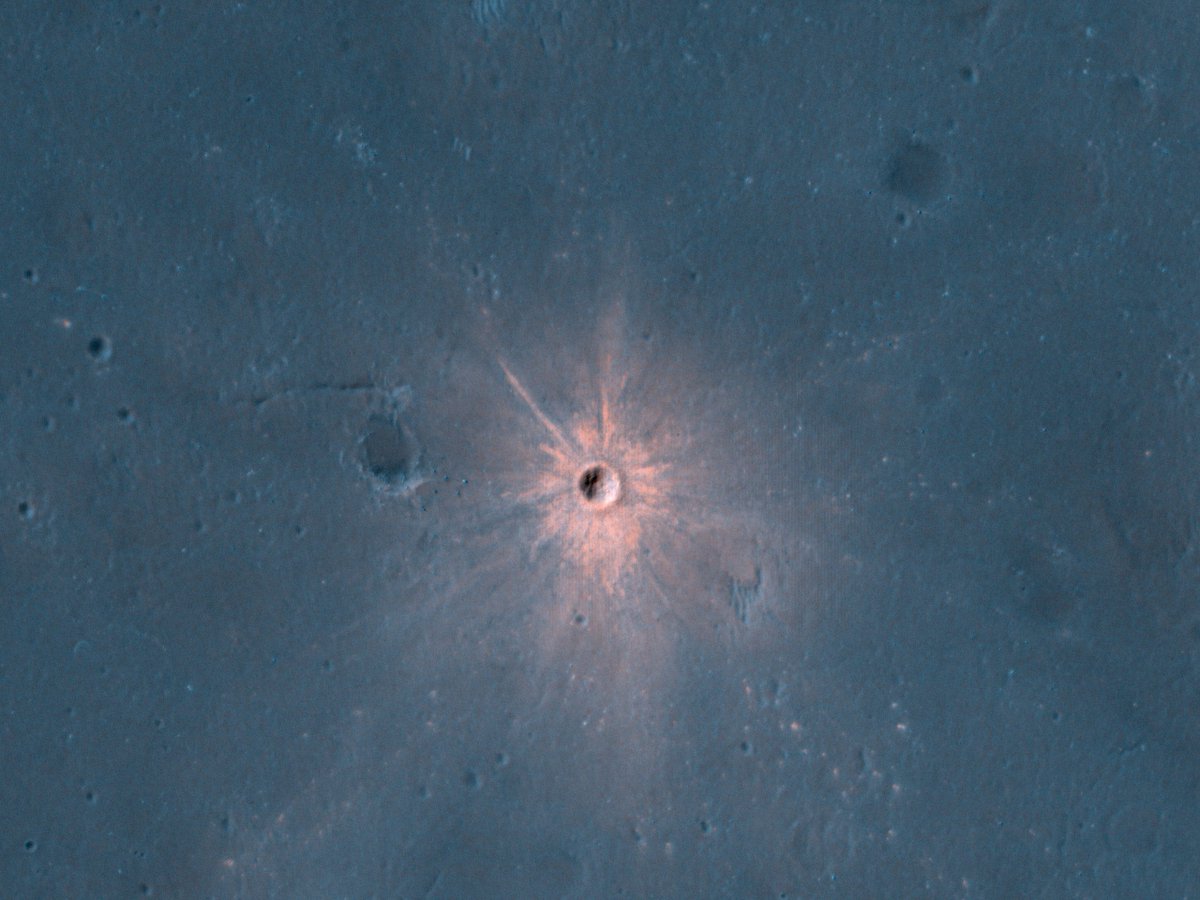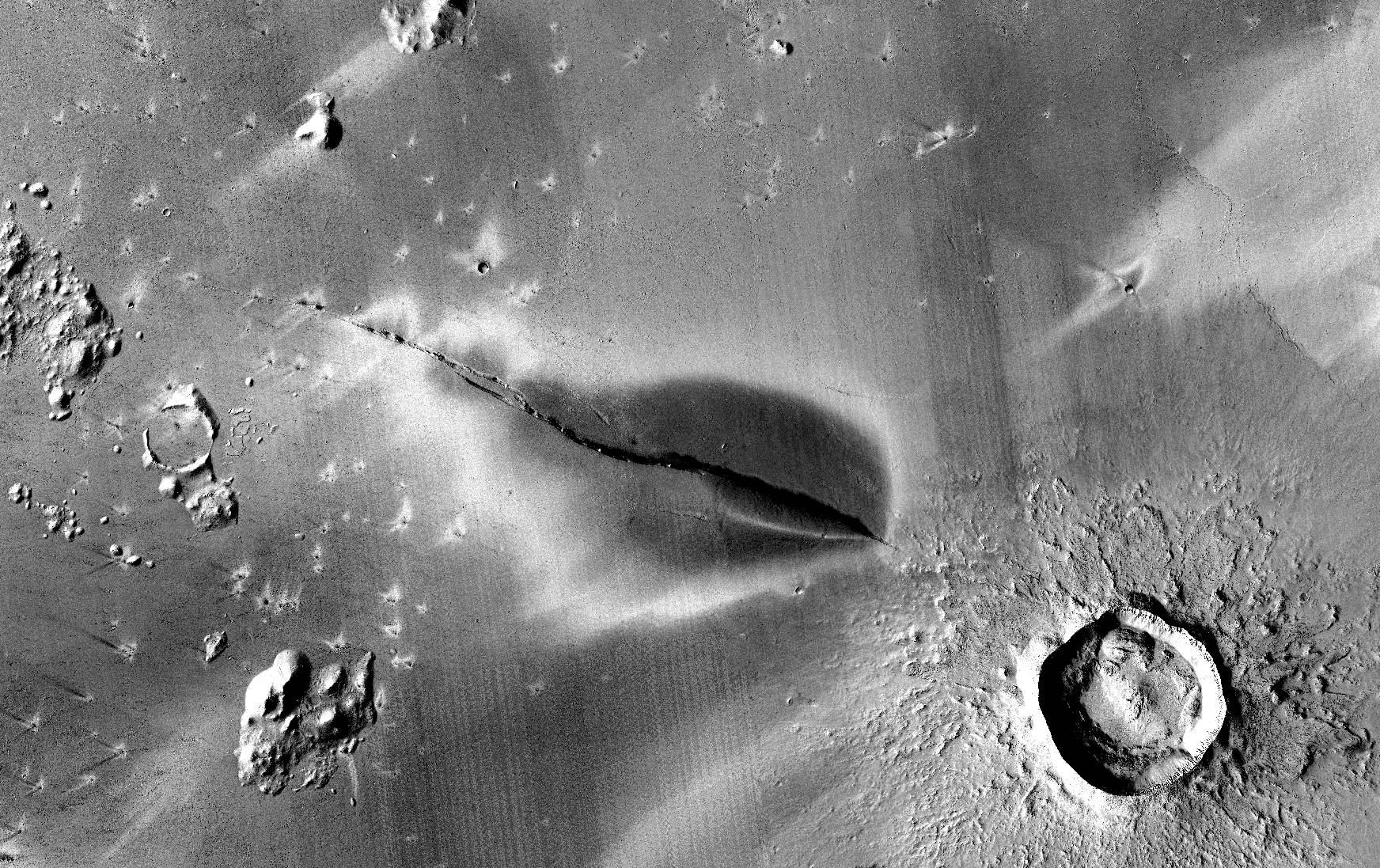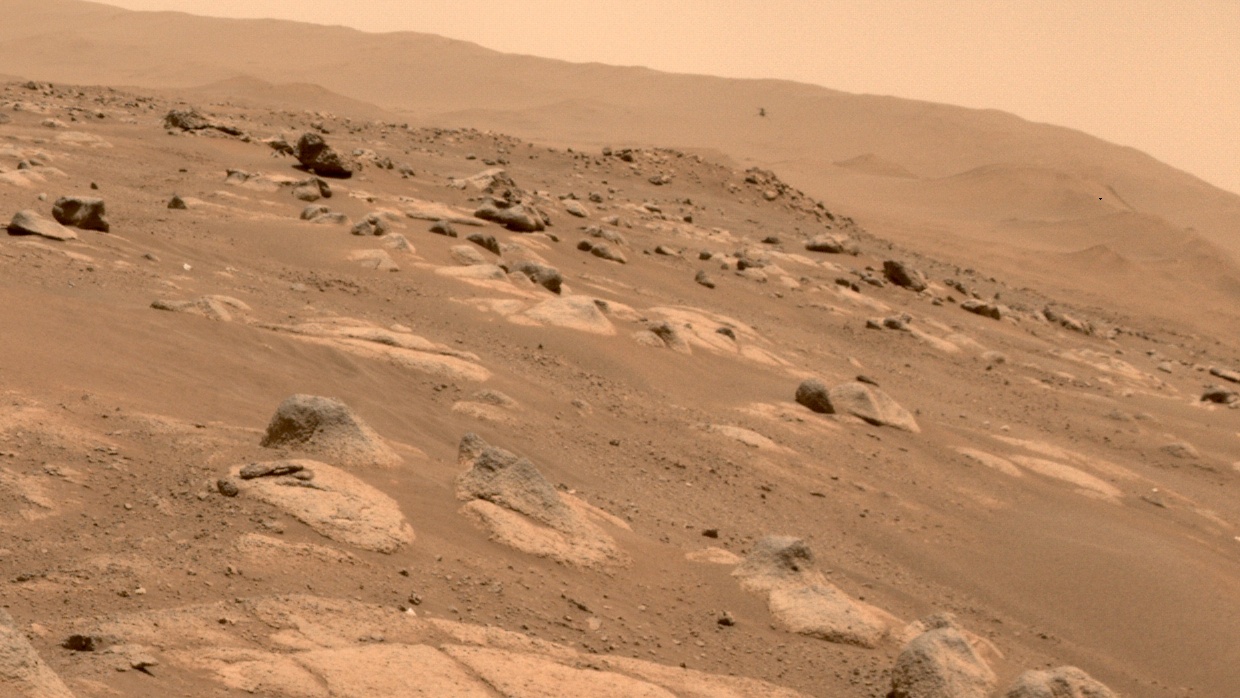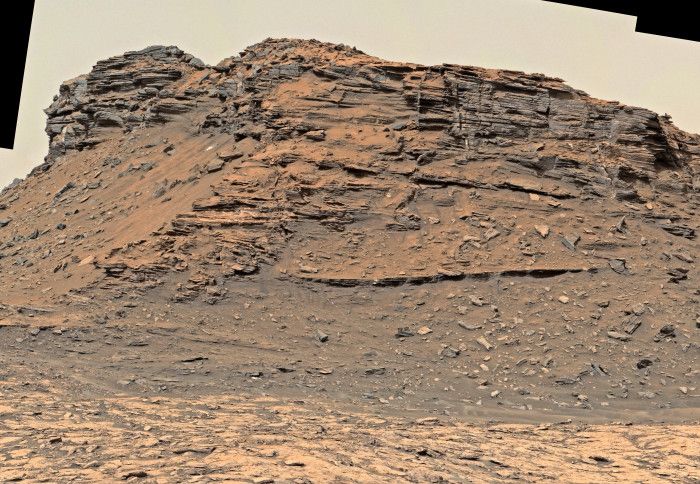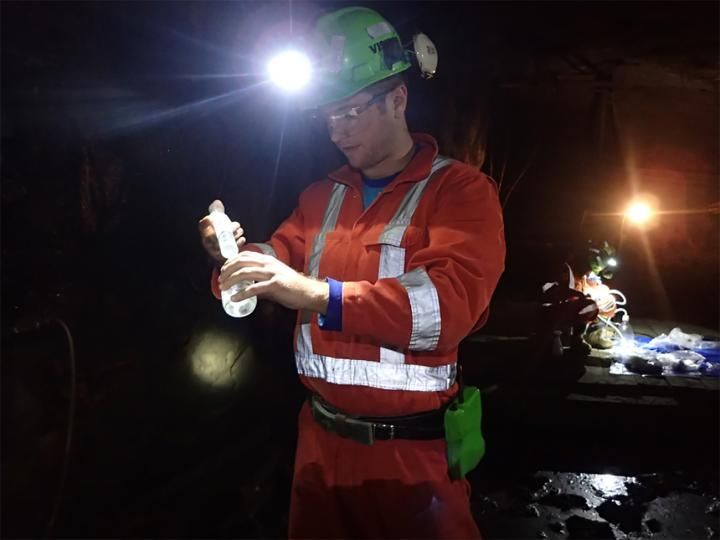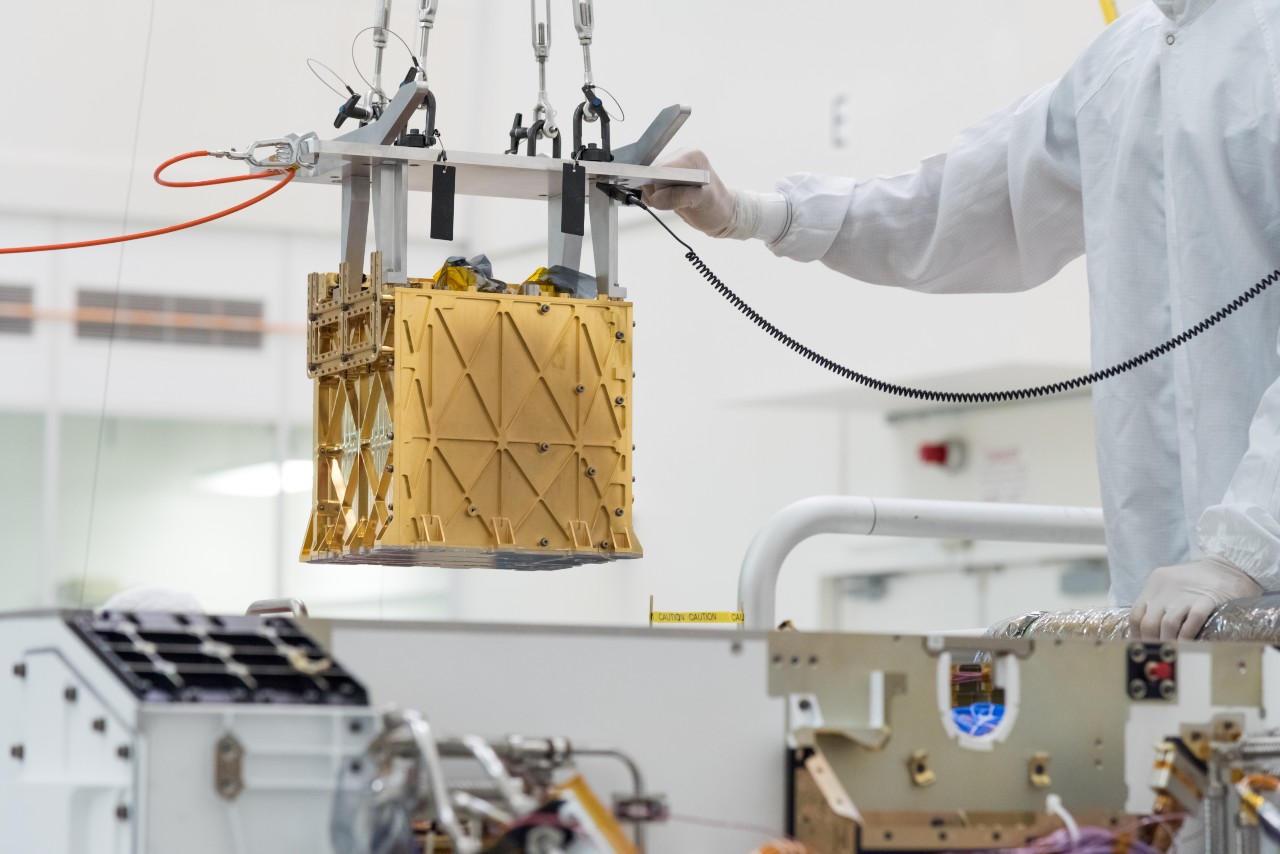Meteors hit much harder on Mars than they do on the Earth. Lack of atmosphere obviously contributes to that, but its proximity to the asteroid belt also makes the red planet a more likely target for some gravitationally disturbed rock to run into. Now that we have a satellite infrastructure consistently monitoring Mars, we are able to capture the aftermath of what happens when it is pummeled by space debris, and the results can be dramatic.
Continue reading “Bright Ejecta Reveals a Fresh Crater on Mars”Volcanoes on Mars Might Still be Active
Back in March, NASA’s InSight lander detected two large quakes from a geologically active region of Mars called the Cerberus Fossae. Now, using imagery from the Mars Reconnaissance Orbiter, which circles the red planet at an altitude of about 300km, researchers have discovered that the Cerberus Fossae region holds the most recent evidence of volcanic activity ever seen on Mars.
Continue reading “Volcanoes on Mars Might Still be Active”Mars Helicopter Completes its 4th Flight. 117 Seconds of Airtime
On April 30th, 2021, the Ingenuity Mars Helicopter achieved yet another milestone and set new records with its fourth flight on Mars. This time around, the helicopter took off at 12:33 AM Mars Standard Time (10:49 AM EDT; 07:49 AM PDT) and ascended to an altitude of 5 meters (16 feet). It then traveled south for approximately 133 meters (436 feet) and then back in the space of about two minutes (117 seconds).
Continue reading “Mars Helicopter Completes its 4th Flight. 117 Seconds of Airtime”One Full Year of Seismic Data Collected by Mars Insight Includes 500 Quakes
The English vocabulary has some words that only make sense from an Earth-bound perspective. Earthquake is one of those. Even in some science fiction and fantasy books, where the action takes place somewhere other than Earth, that team is used to denote the ground shaking. It’s therefore nice to see planetary scientists trying to expand the root word to other planets. Marsquakes are the most commonly studied, and now thanks to InSight scientists have collected a full year of data on Marsquakes for the first time.
Continue reading “One Full Year of Seismic Data Collected by Mars Insight Includes 500 Quakes”Dune Fields in Gale Crater Tell the Story of Mars’ Shifting Climate Over Eons
Rocks can tell us a lot about a planet. On Earth, the study of geology has been around for hundreds of years and has resulted in such scientific findings as the theory of plate tectonics and the discovery of dinosaur fossils. Geology on Mars has not had as long and storied a history, but with the rovers that have landed on the planet in the last few decades, Martian geology has started to bloom. Curiosity, one of those rovers, has done a particularly good job at documenting the rock formations in its neighborhood of Gale crater. Now researchers led by a team at Imperial College London have published a paper using data from Curiosity that detail a set of ancient dunes on Mars that provide some insight into the planet’s former habitability.
Continue reading “Dune Fields in Gale Crater Tell the Story of Mars’ Shifting Climate Over Eons”Mid-Latitude Glaciers on Mars Could Supply Water to Human Explorers
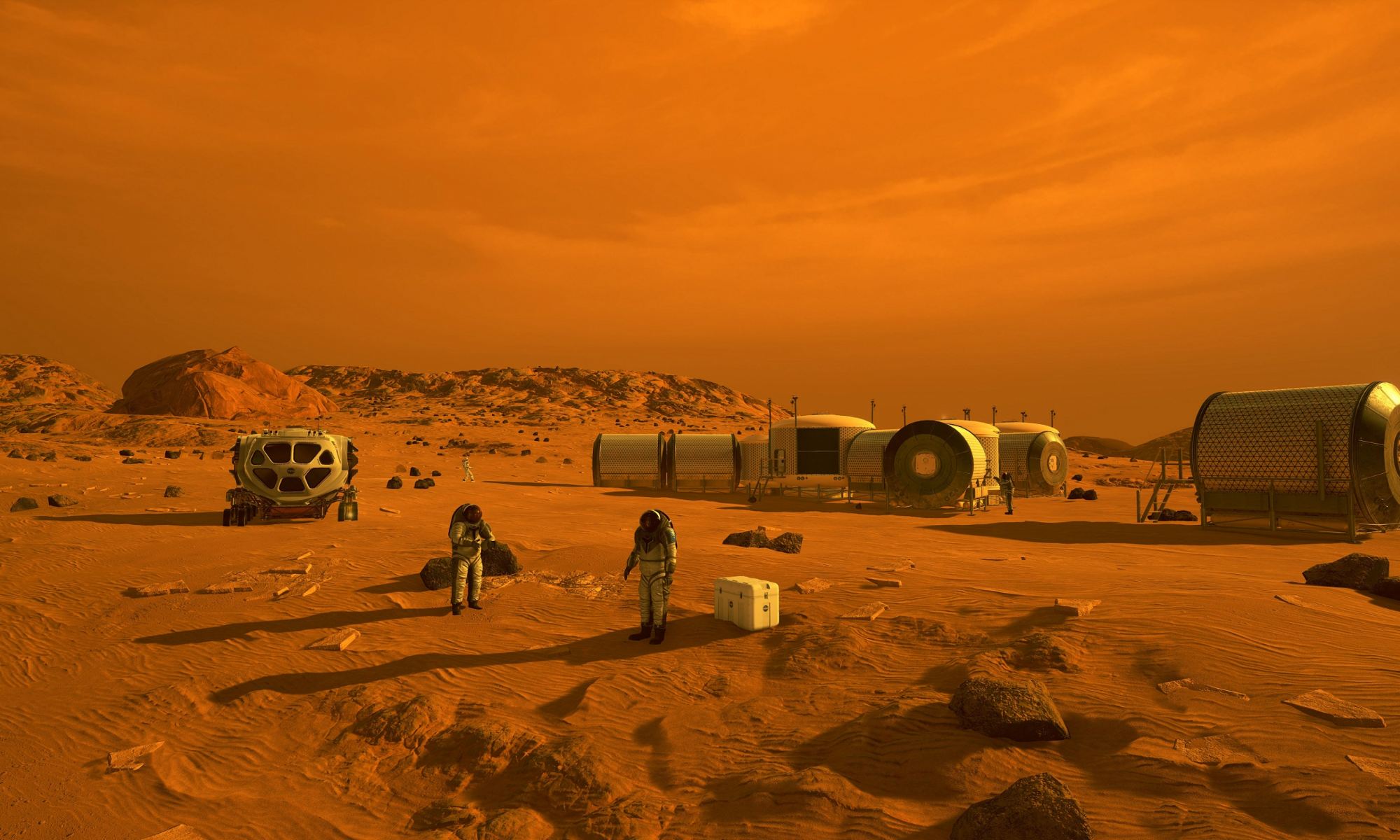
By Earth standards, the surface of Mars is the picture of desolation. It’s not only irradiated and cold enough to make Antarctica look balmy, but it’s also one-thousands times drier than the driest places on Earth. However, beneath the super-arid surface of the Red Planet, there are abundant supplies of water ice that could someday be accessible to human explorers (and even settlers).
This is especially the case in the mid-latitude region known as Arcadia Planitia, a smooth plain located in Martian northern lowlands. According to new research conducted with support from NASA’s Jet Propulsion Laboratory (JPL), the region shows signs of glaciers and glacier activity. These findings could prove very useful for the future human landings and exploration of Mars, not to mention potential settlement.
Continue reading “Mid-Latitude Glaciers on Mars Could Supply Water to Human Explorers”Ingenuity Completes a Huge 50-Meter Flight on Mars
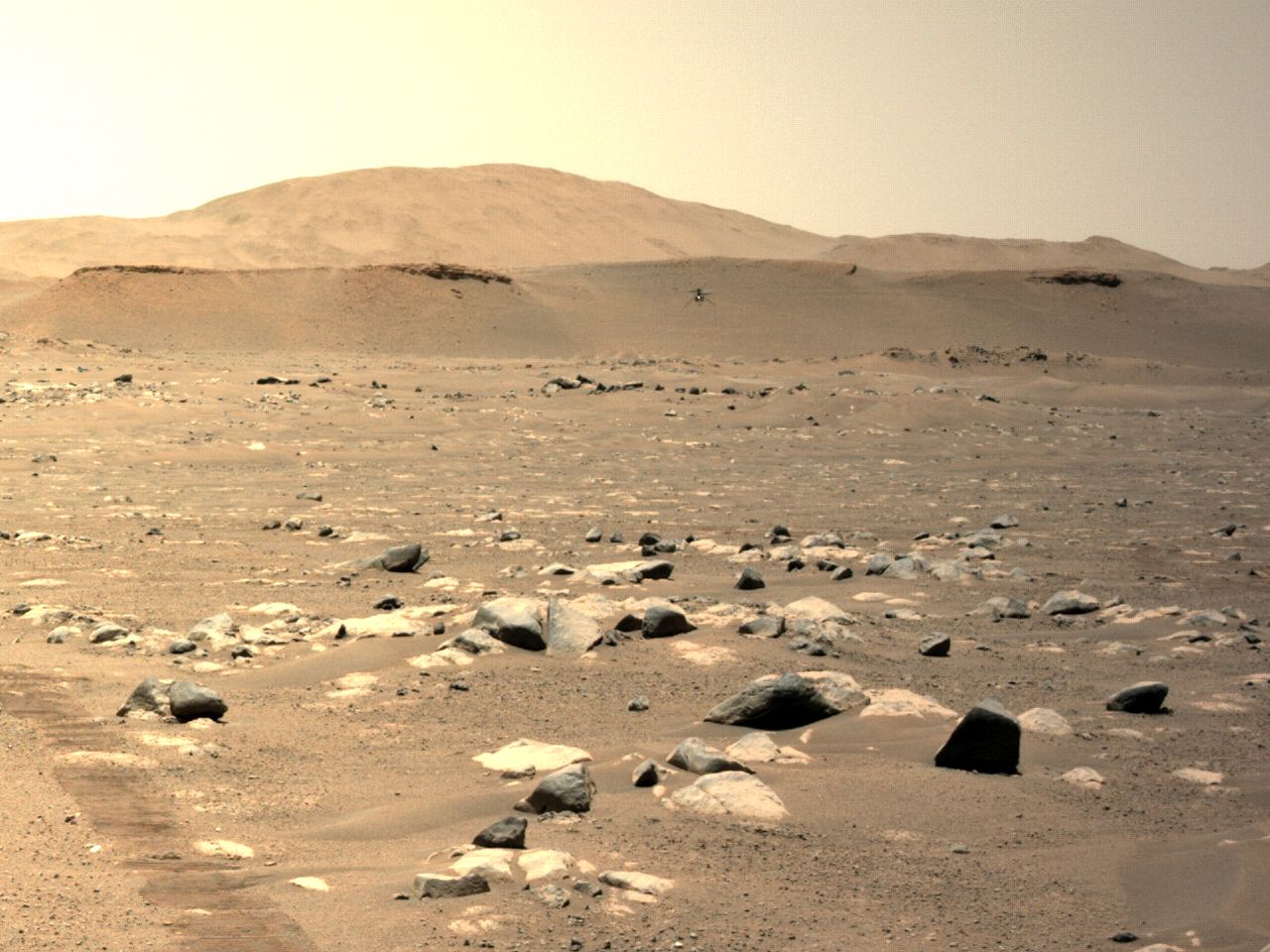
On Feb. 18th, 2021, the Perseverance rover landed on Mars carrying the most advanced scientific instruments ever sent to another planet. It also carried experiments designed to push the envelope of exploration and help pave the way for crewed missions to Mars. This includes the Ingenuity Mars Helicopter, an experimental flight system designed to see if aerial systems can operate in the Martian atmosphere.
After making its inaugural flight on April 19th, Ingenuity has taken to the air twice more and set many records in the process. During its most recent test flight (which took place on the morning of April 25th), the helicopter flew farther and faster than ever before. All told, the helicopter covered a distance of 50 meters (164 feet) in 80 seconds, reaching a top speed of 2 m/s (6.6 feet per second) or 7.2 km/hour (4.5 mph).
Continue reading “Ingenuity Completes a Huge 50-Meter Flight on Mars”Mars has the Right Conditions for Life Just Under the Surface
According to the immortal words of Ian Malcom (Jeff Goldblum) “Life..uh…finds a way”. Back in 2005, an article in Nature used the famous quote from Jurassic Park to describe the possibility of life surviving on Mars. It encapsulates the hope that life’s adaptability, which it has proved itself so many times over on Earth, could hold true on other planets as well. Now a new paper in Astrobiology shows that there might very well be a place where life can sustain itself on the red planet – right underneath the surface.
Continue reading “Mars has the Right Conditions for Life Just Under the Surface”Perseverance Successfully Extracts Oxygen From the Martian Atmosphere. About 10 Minutes of Breathing Time for an Astronaut
Humanity achieved an incredible series of new milestones on Mars this week. It began on Monday April 19th, when the Ingenuity helicopter demonstrated the first-ever powered, controlled flight on another world. And now, for the first time, the Perseverance rover has used ingredients from the Martian atmosphere to create breathable oxygen, in a test that might pave the way for future astronauts to ‘live off the land’ on the Red Planet.
Continue reading “Perseverance Successfully Extracts Oxygen From the Martian Atmosphere. About 10 Minutes of Breathing Time for an Astronaut”This Is a Collapsed Pit on Mars, Not a Pimple
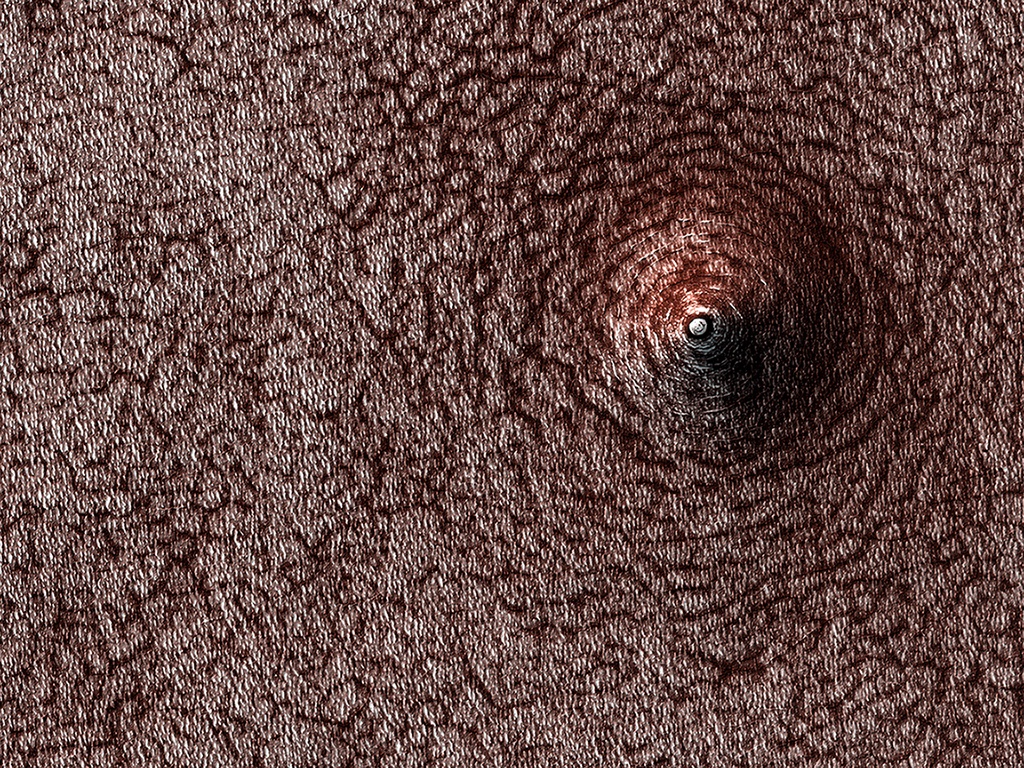
Mars has been in the news a lot lately, and for good reason. With the historic landing of the Perseverance Rover earlier in the year, and the successful flight of Ingenuity, the first-ever aircraft to fly in another atmosphere, earlier this morning (April 19, 2021), there’s no shortage of exciting stories of technical brilliance from the human-built wonders exploring the red planet. High above the plucky helicopter, the Mars Reconnaissance Orbiter (MRO) surveys the Martian landscape on a grand scale. A brain-bending image released by High Resolution Imaging Science Experiment (HiRISE), a powerful camera aboard MRO, shows a sunken pit in the planet’s polar region. From the high-altitude perspective of the orbiter, it’s easy for the mind to warp the concave depression into a convex, acne-esque Martian polar zit!
Continue reading “This Is a Collapsed Pit on Mars, Not a Pimple”
